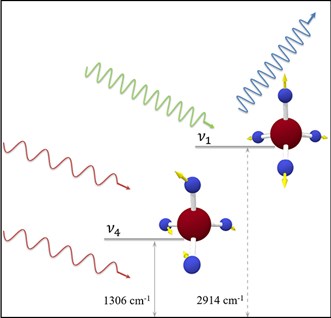 The scent of flowers that we breathe, the water in the sea that we play with, the colorful world around us that we explore, have you ever wondered what they are made of? The answer is atoms and molecules, teeny-tiny particles that we cannot see with our eyes, but scientists have developed many different ways to distinguish.
The scent of flowers that we breathe, the water in the sea that we play with, the colorful world around us that we explore, have you ever wondered what they are made of? The answer is atoms and molecules, teeny-tiny particles that we cannot see with our eyes, but scientists have developed many different ways to distinguish.
Dr. Vladislav Yakovlev, professor in the Department of Biomedical Engineering at Texas A&M University, has recently had a breakthrough with one of these ways, Raman scattering. When it comes to viewing these building blocks of life, this new technique attains low-background coherent Raman scattering that is controlled by a tunable infrared laser. Raman scattering is the inelastic scattering of a photon by molecules.
The technique developed by Yakovlev is called Mid-infrared Assisted Coherent anti-Stokes Raman Scattering/Spectroscopy (MIRA CARS) and is an entirely new technique. This approach offers a new advantage, including a potential for higher emission intensity, a reduction of nonresonant four-wave mixing background, preferential excitation of the anti-stokes field and simplified phasing matching conditions. Currently, there are many different Raman techniques that are widely used and range from microscopic imaging, high-resolution spectroscopy and even the detection of fatality inducing spores such as anthrax.
Yakovlev noted that the current challenge at hand is the availability of Mid-IR sources. Researchers and companies alike are steadily pushing the boundaries of what Mid-IR tools are capable of. In addition, infrared light is absorbed by water and carbon dioxide, this in turn could limit the available wavelength if the beam is formed within open air or within biological samples. However, as demonstrated by Andrew Traverso and Brett Hokr, two former students in Yakovlev's group, two-photon excitation lifts most of such restrictions and benefits a background free and highly efficient CARS technique that will greatly enhance the sensitivity of current methods.
The theory for the new Raman scattering method was developed by Dr. Marlan Scully, Zhenhuan Yi and Luqi Yuan of the Institute of Quantum Science and Engineering and Department of Physics and Astronomy at Texas A&M. Their experimental research eventually became the groundwork for Yakovlev.
The research conducted at Texas A&M was funded by the Air Force Office of Scientific Research, Office of Naval Research and the National Science Foundation.